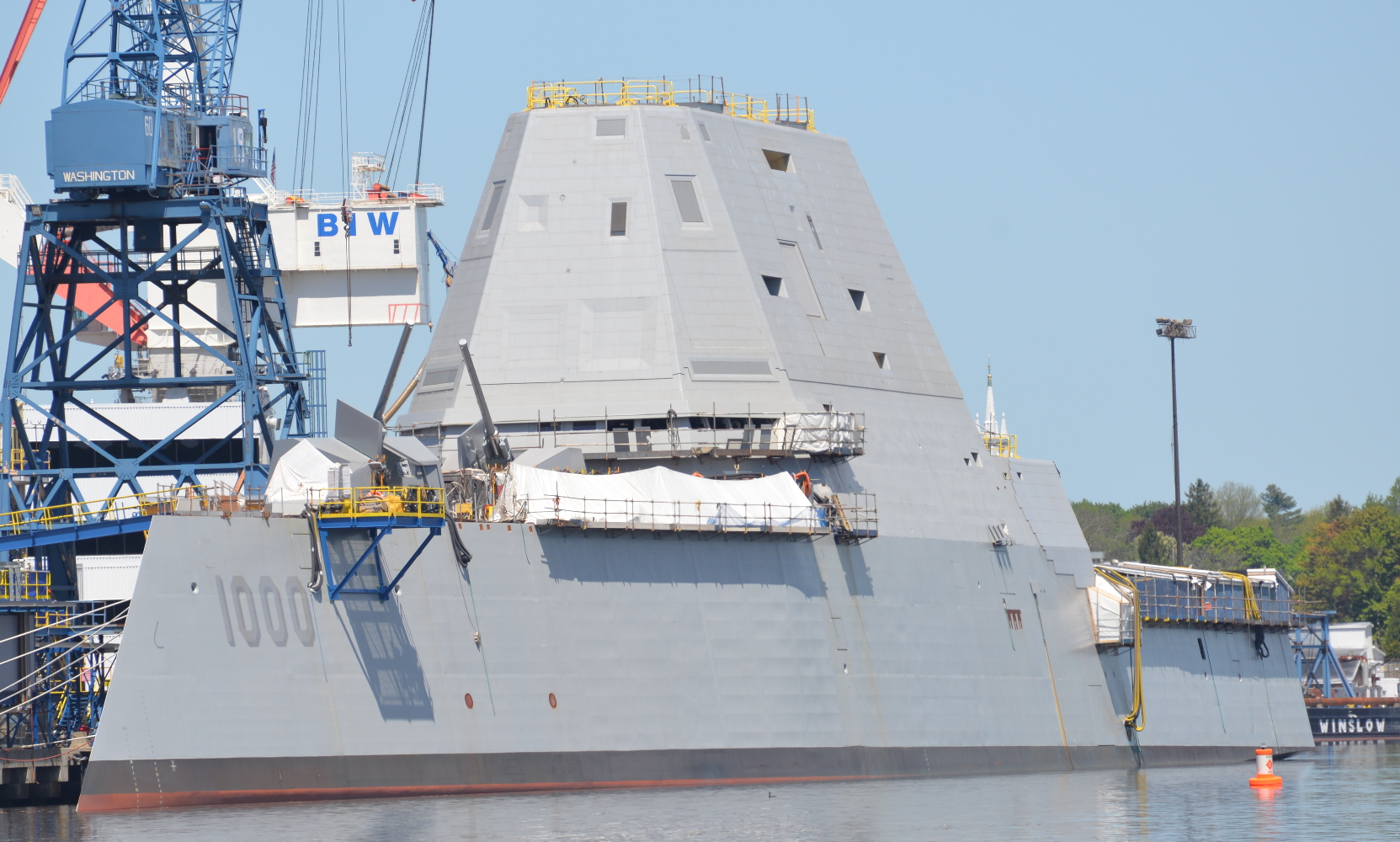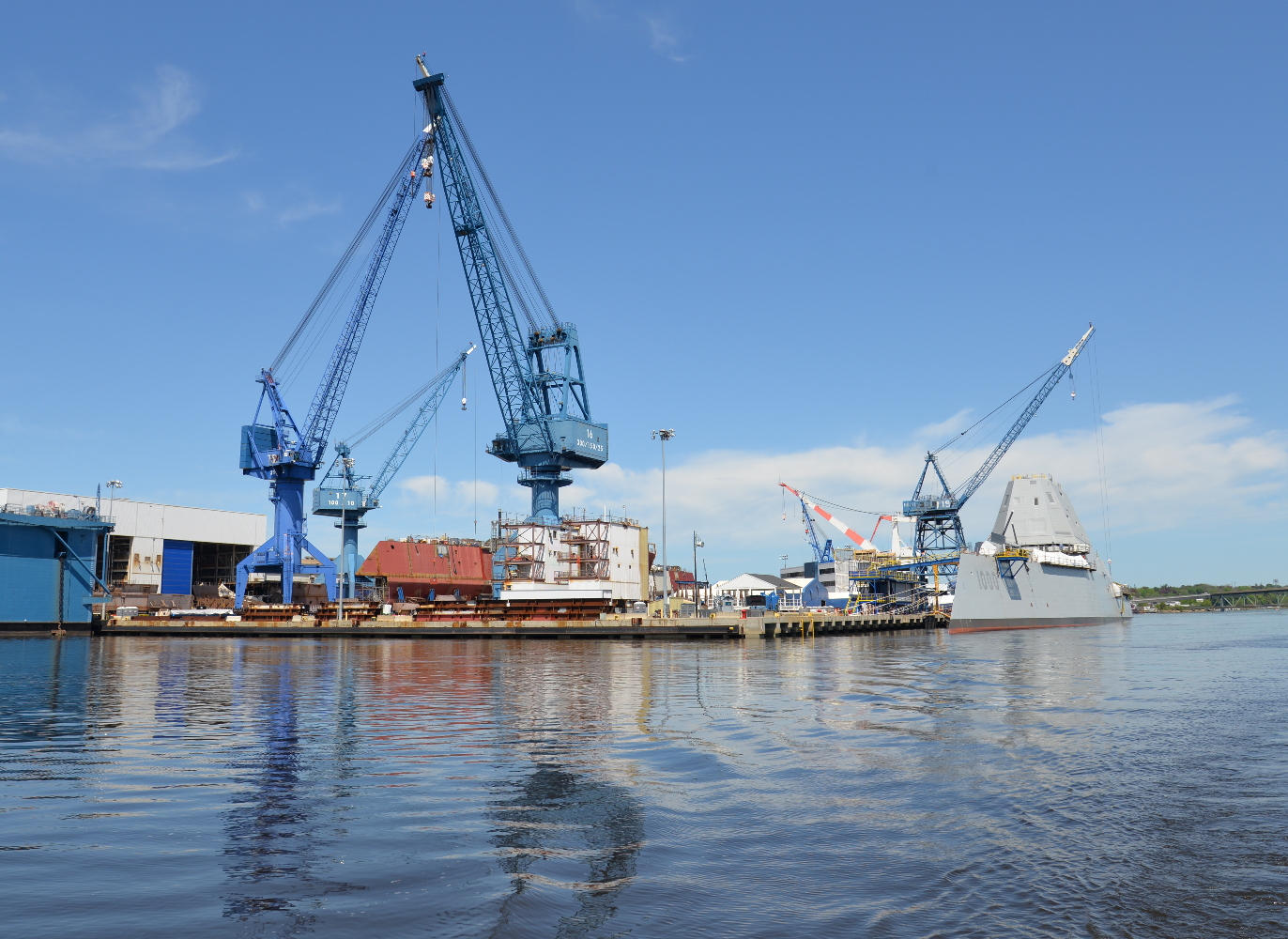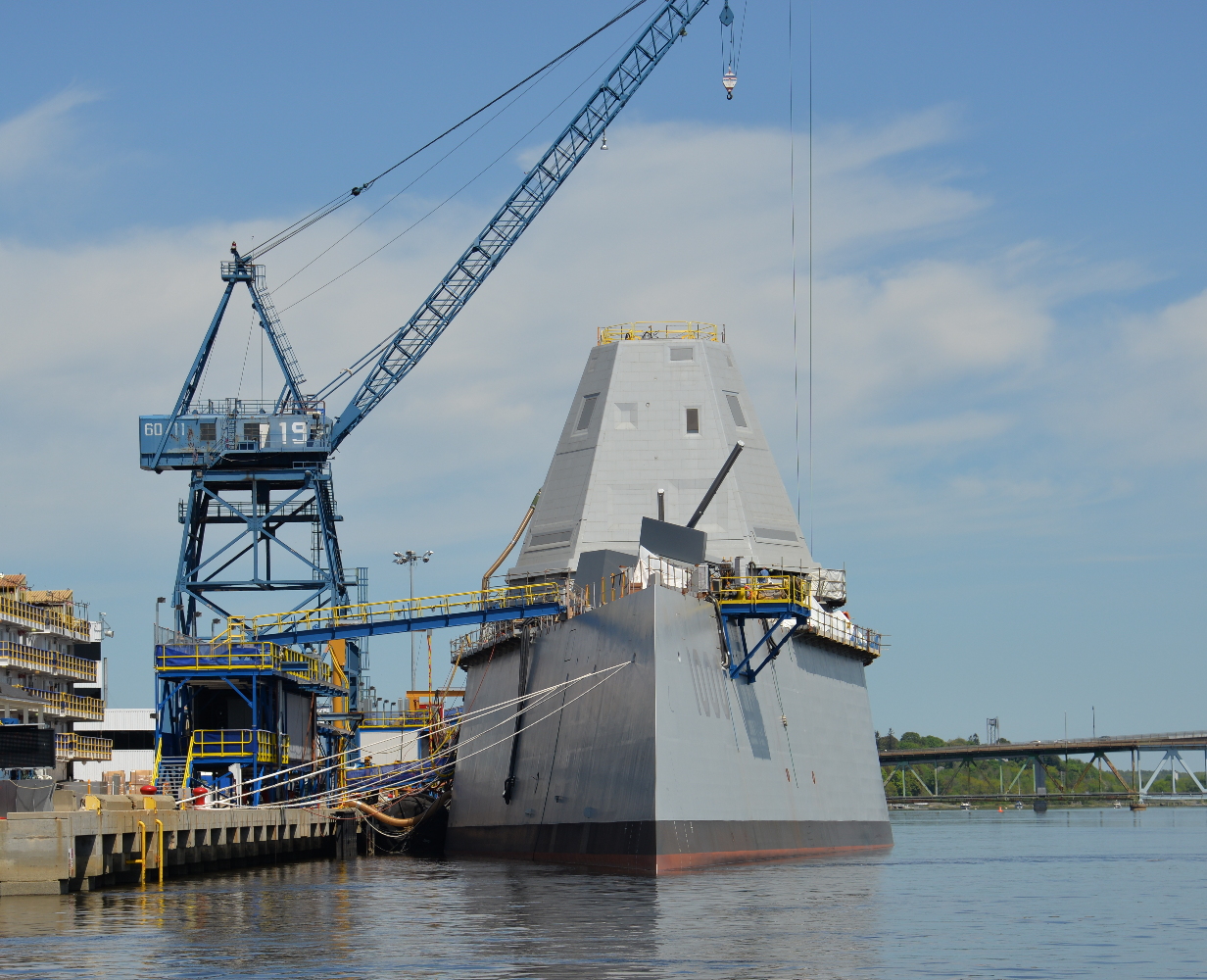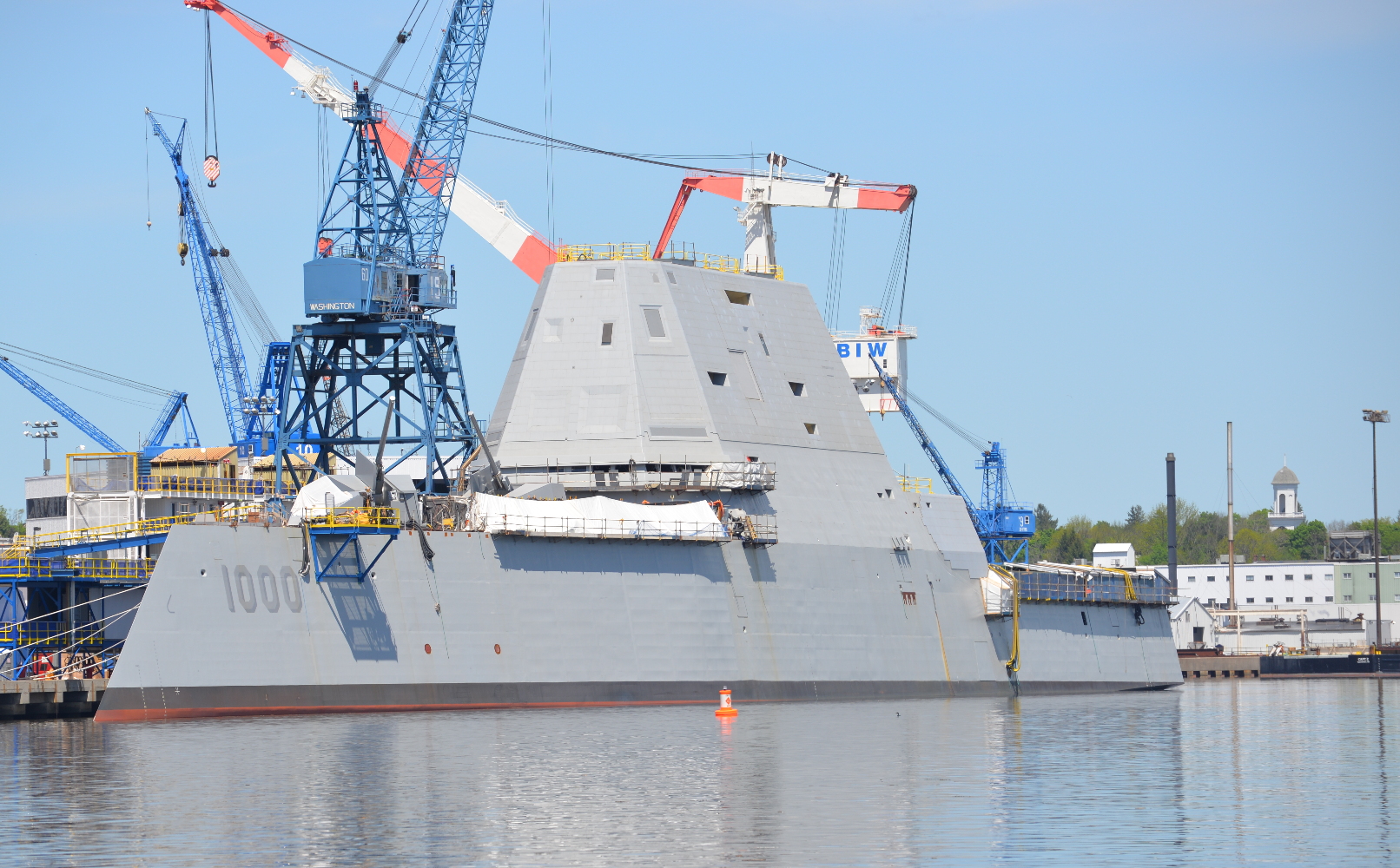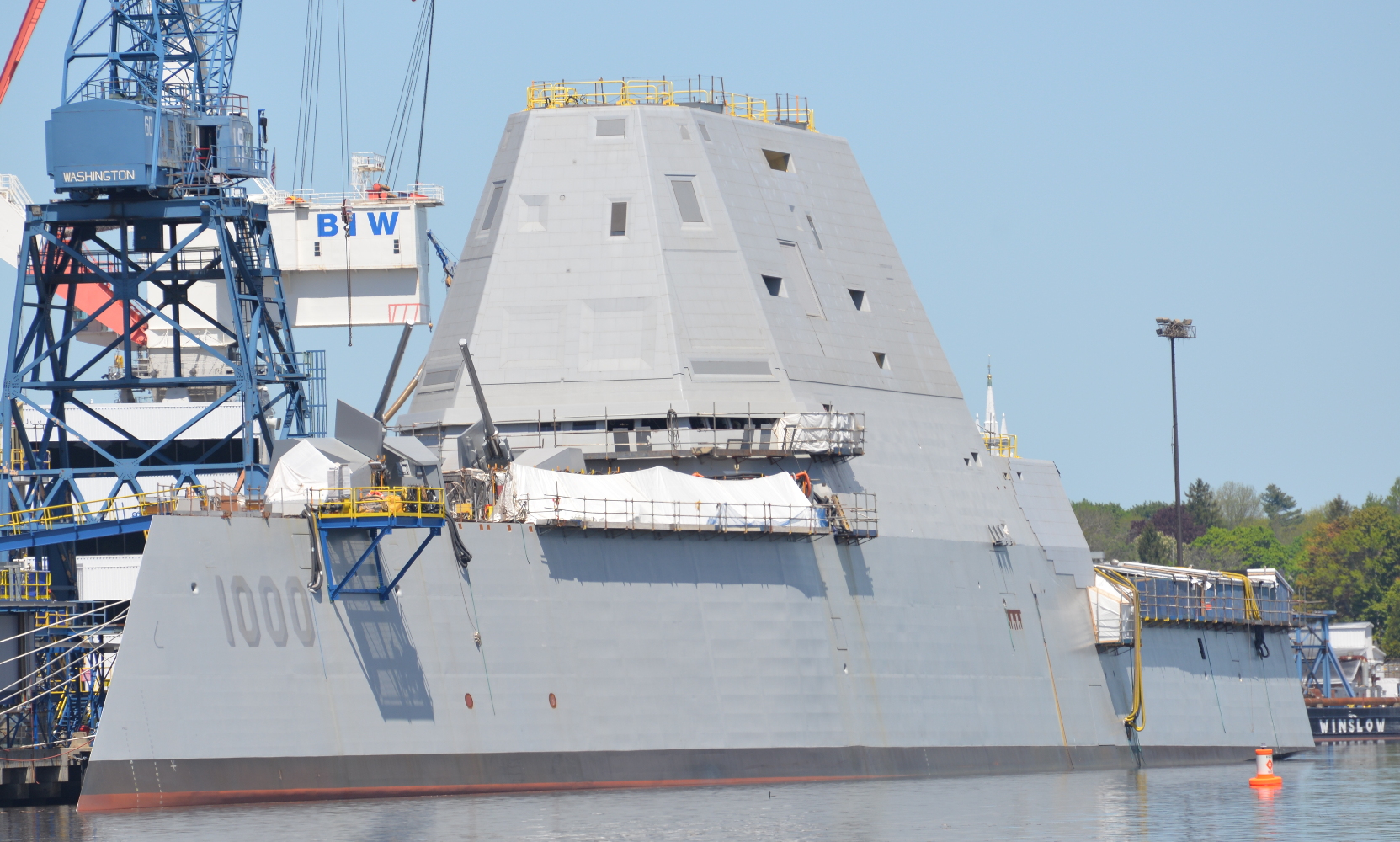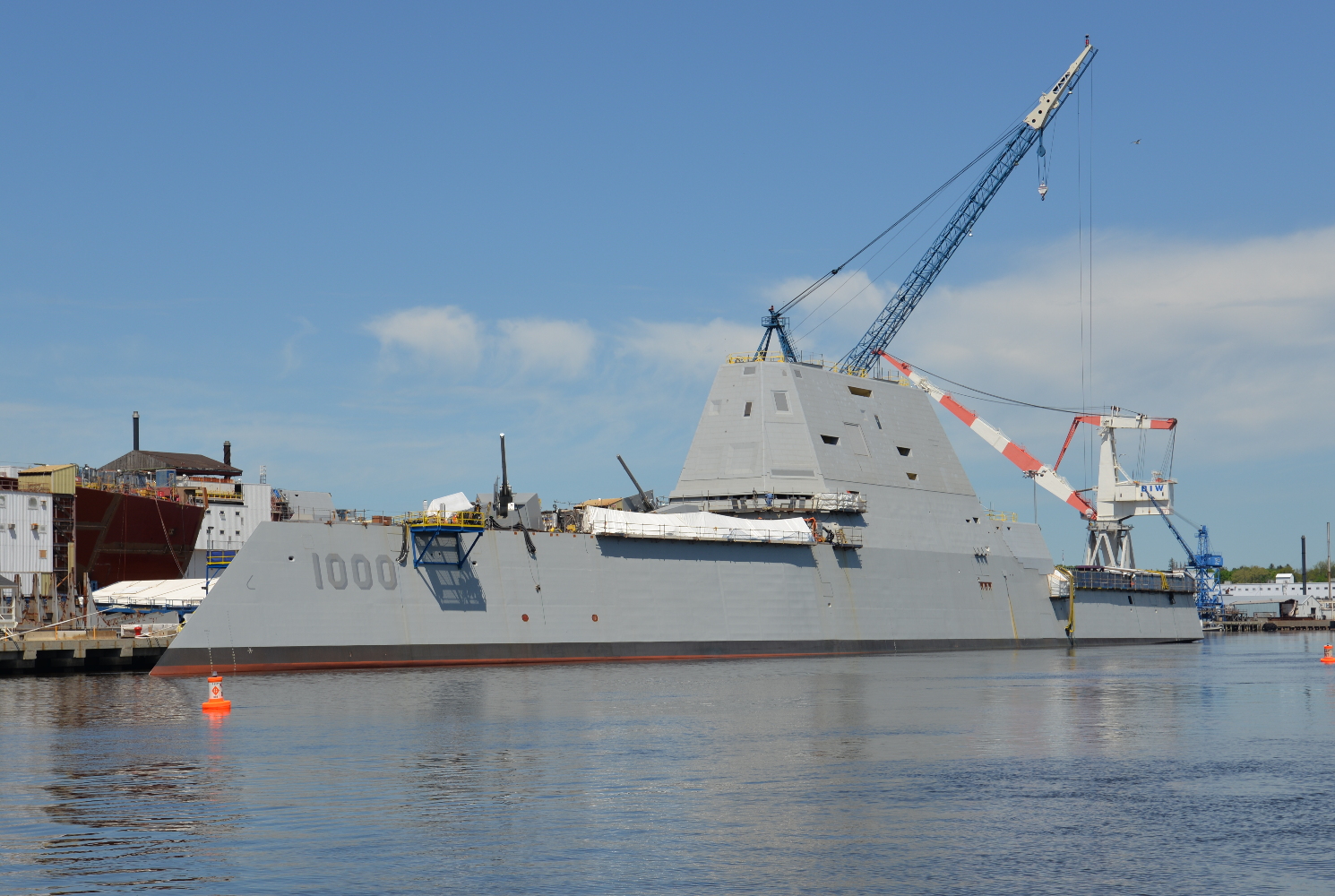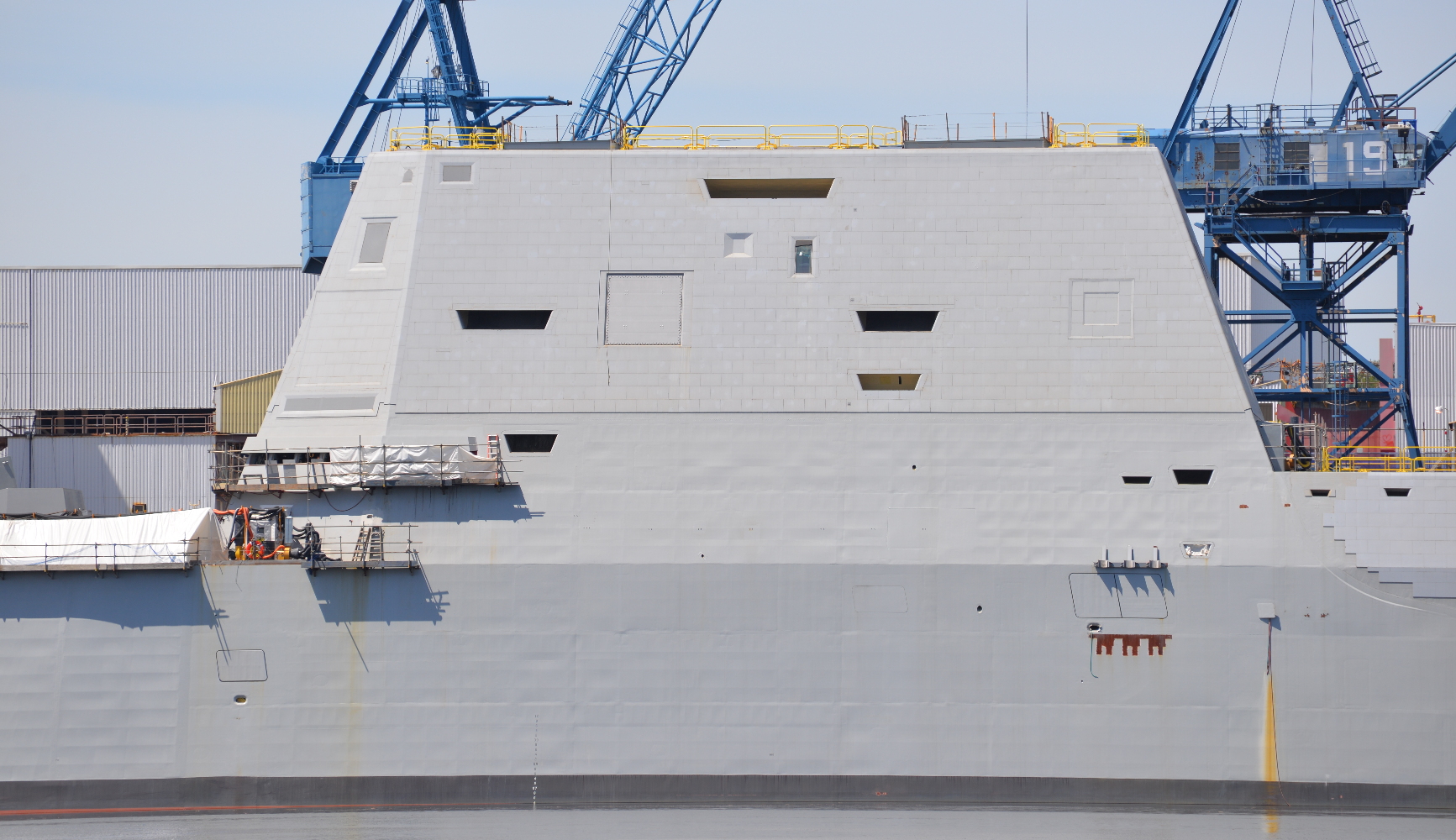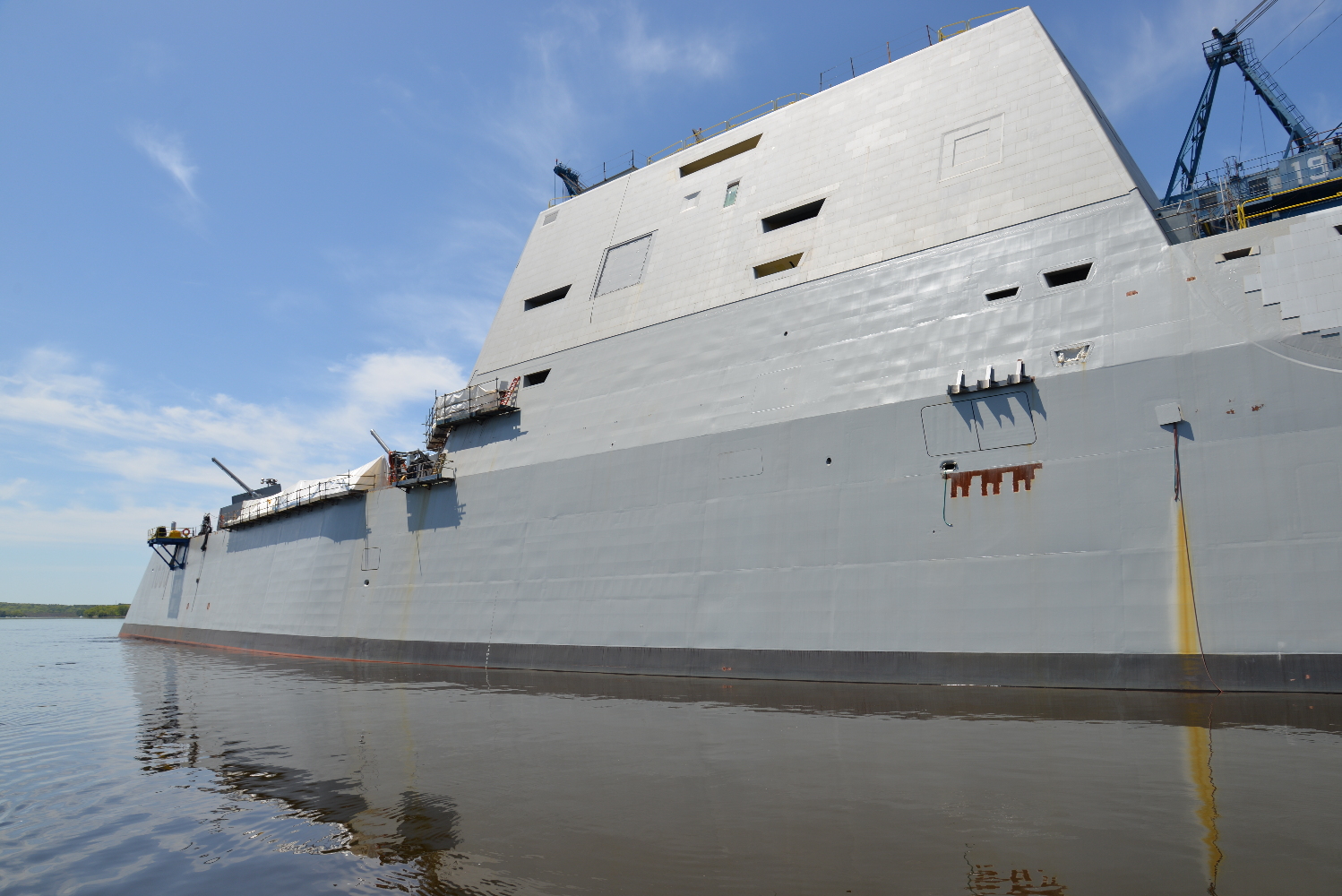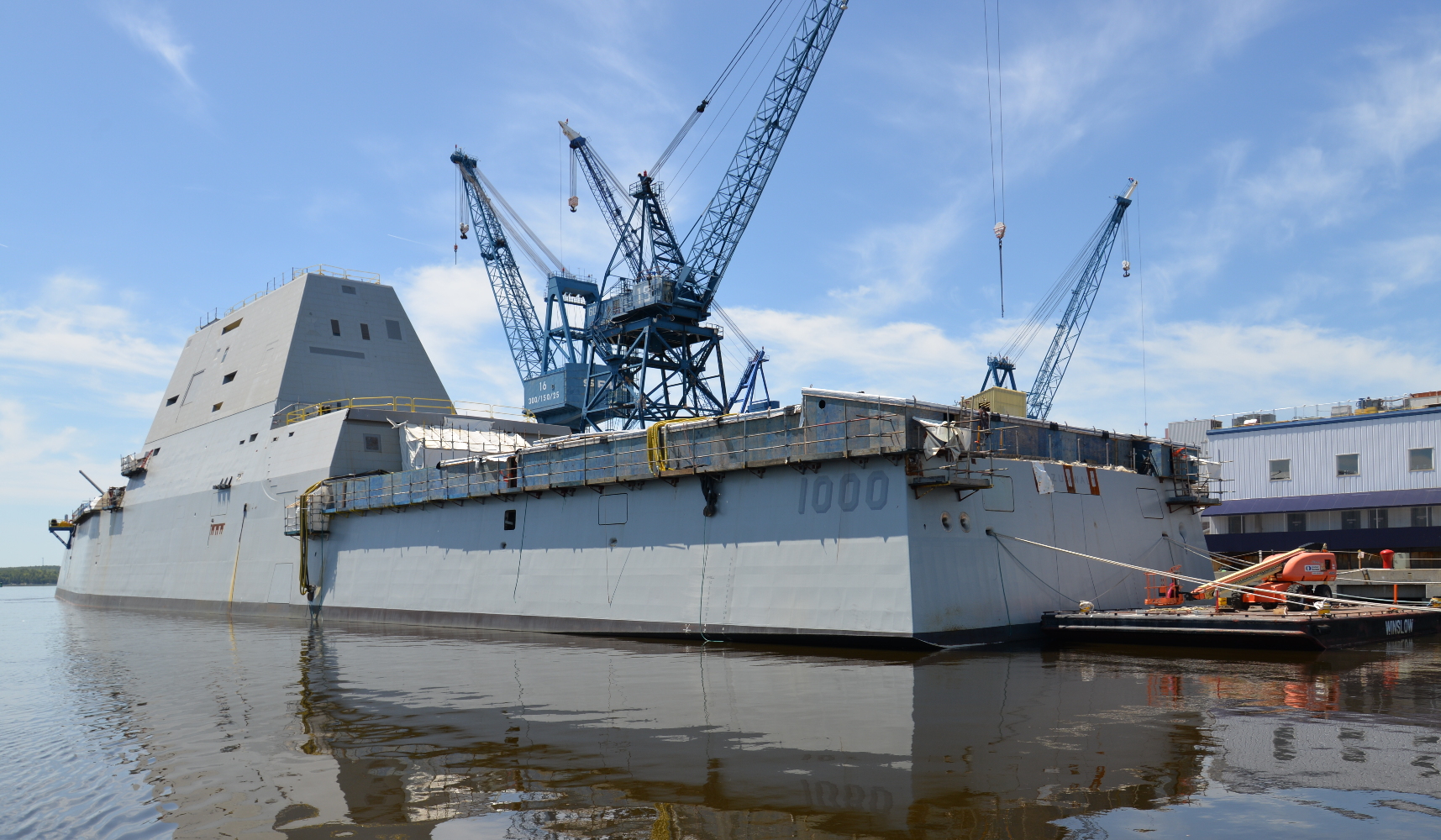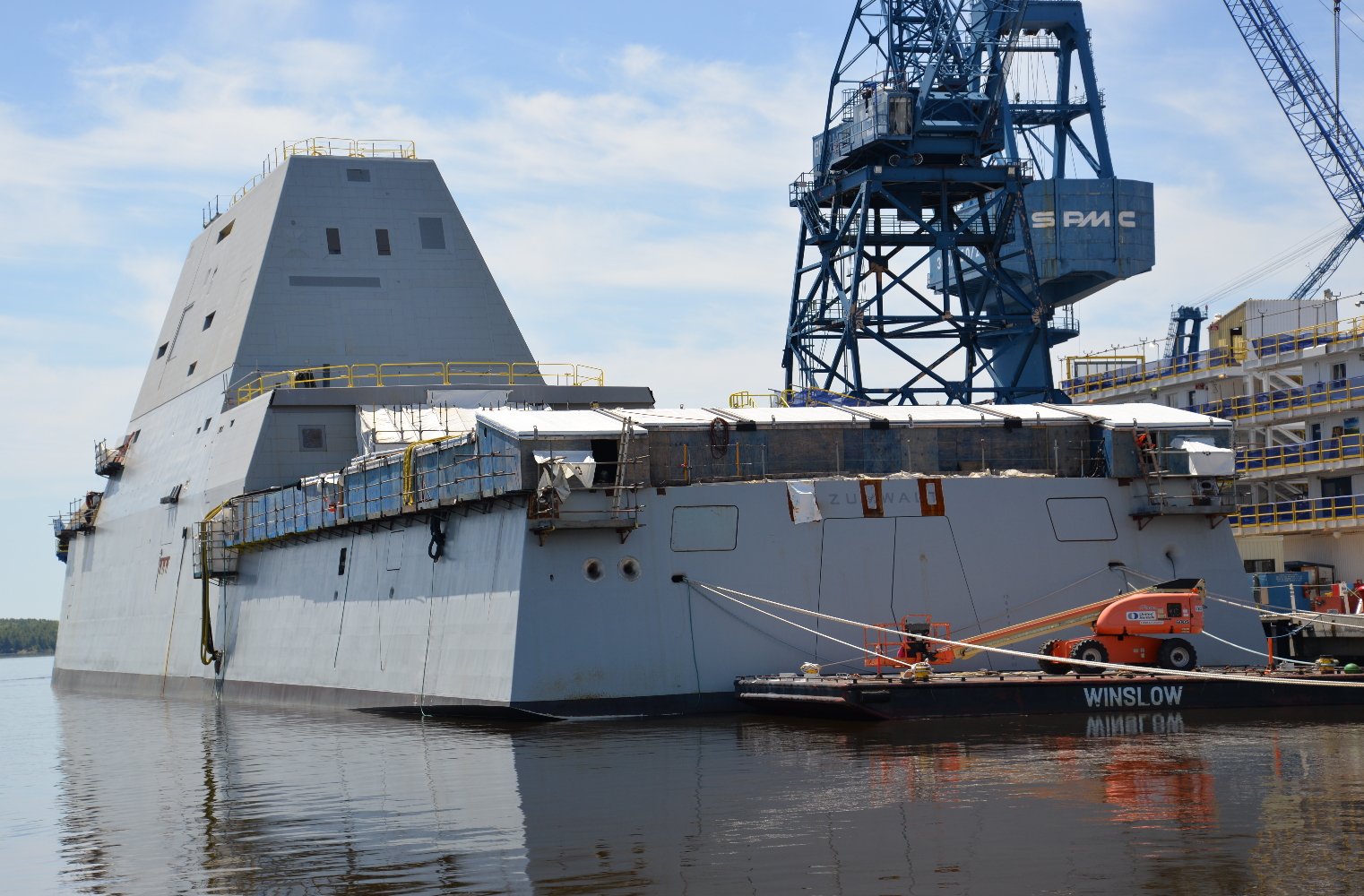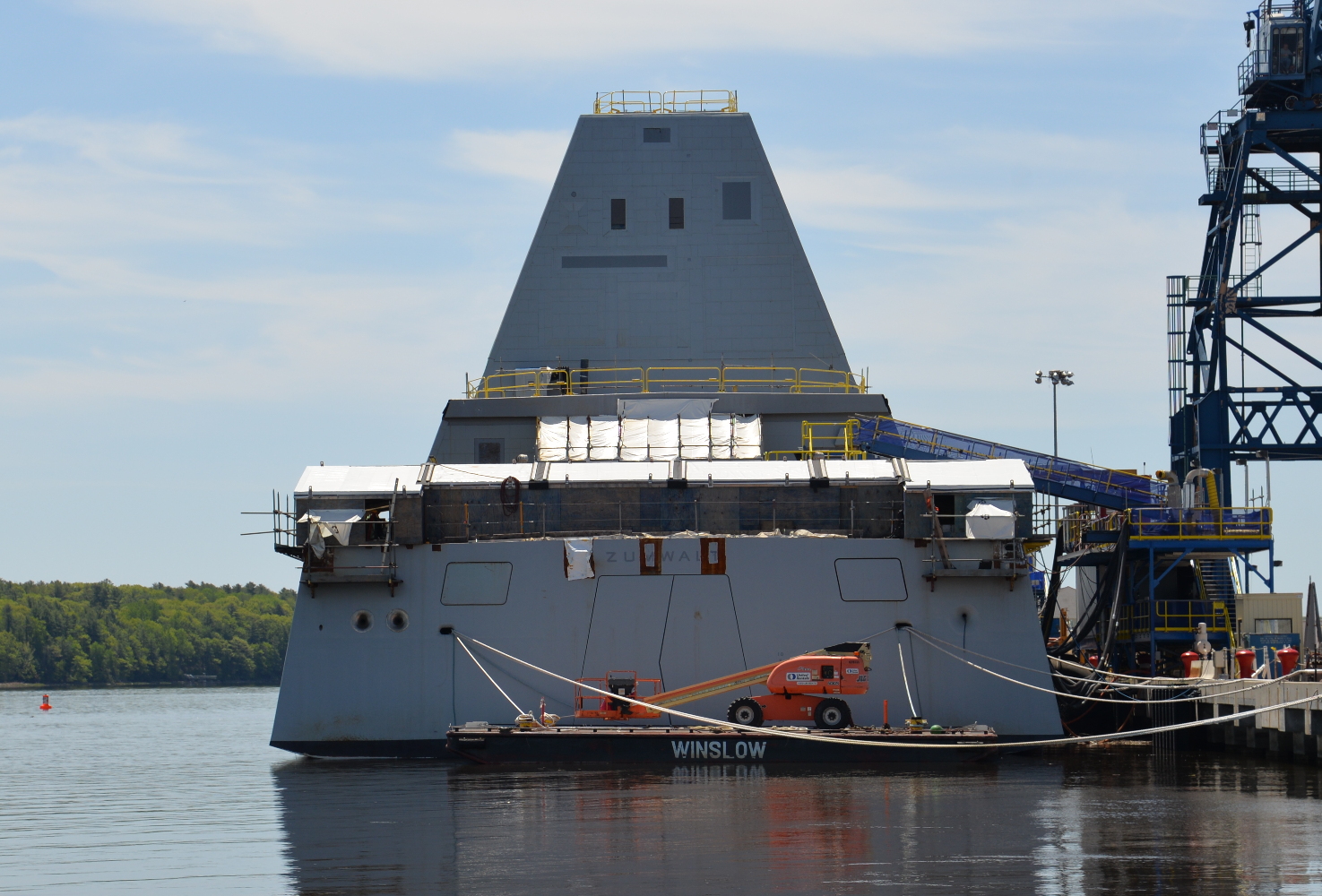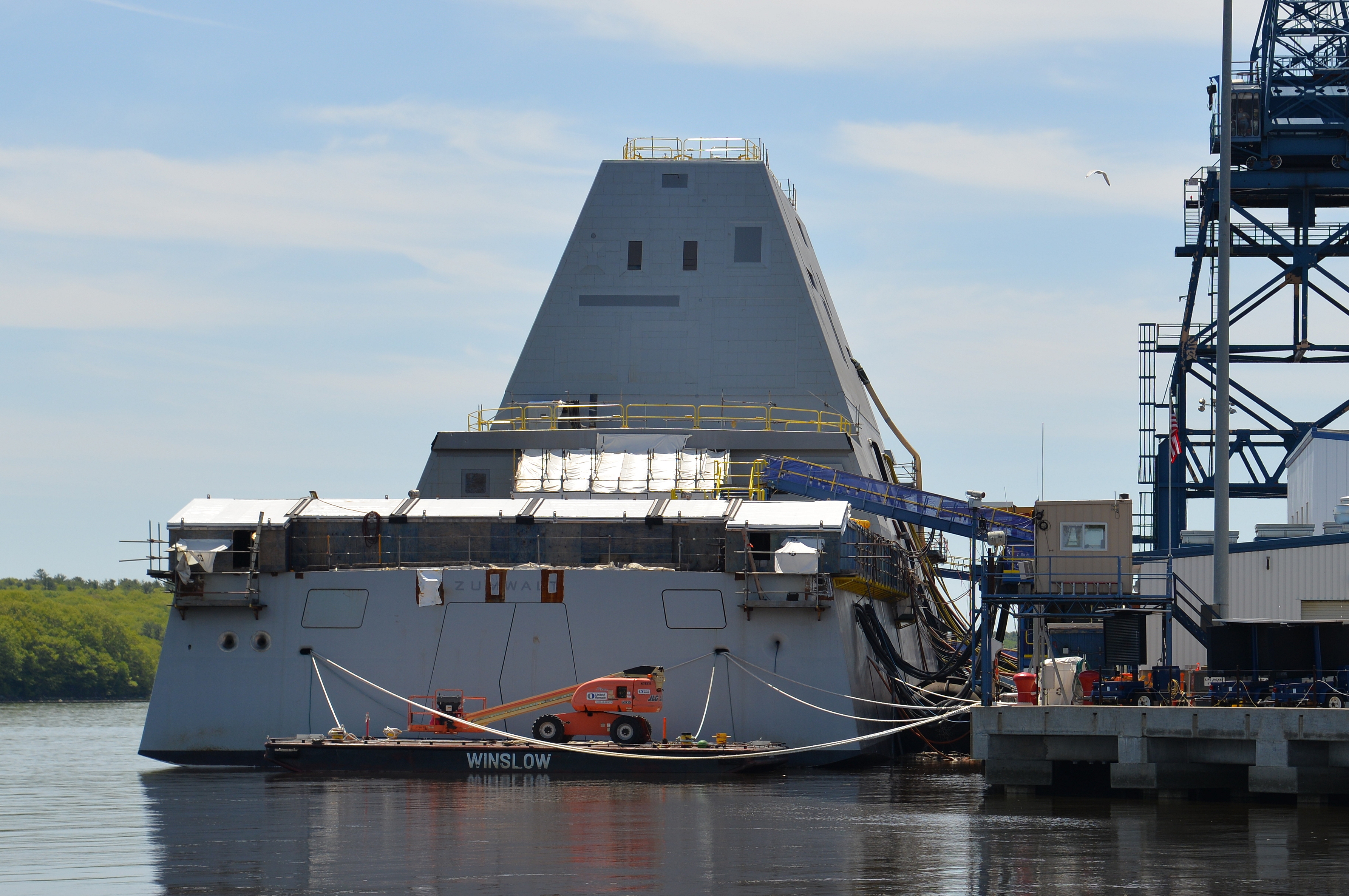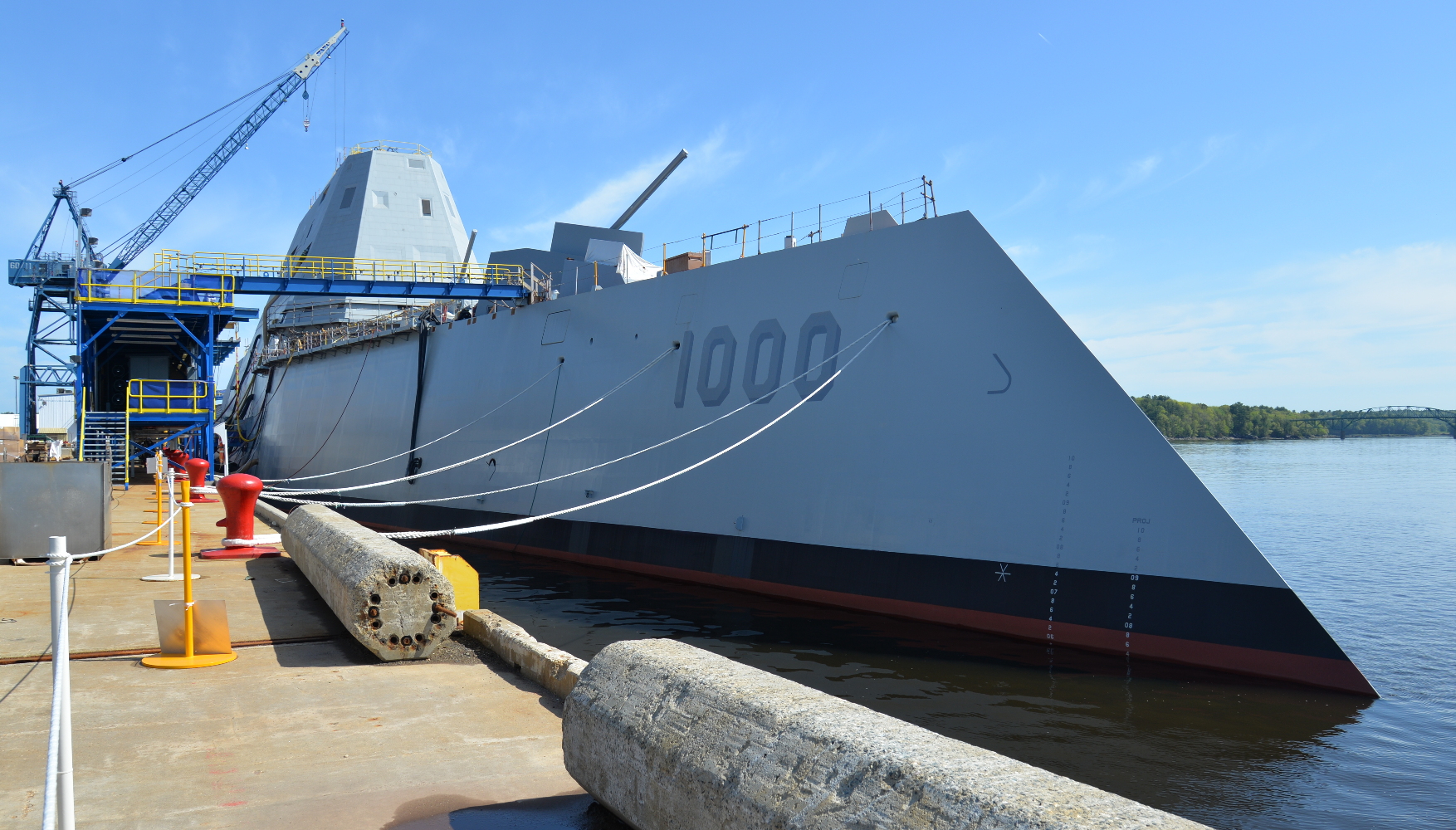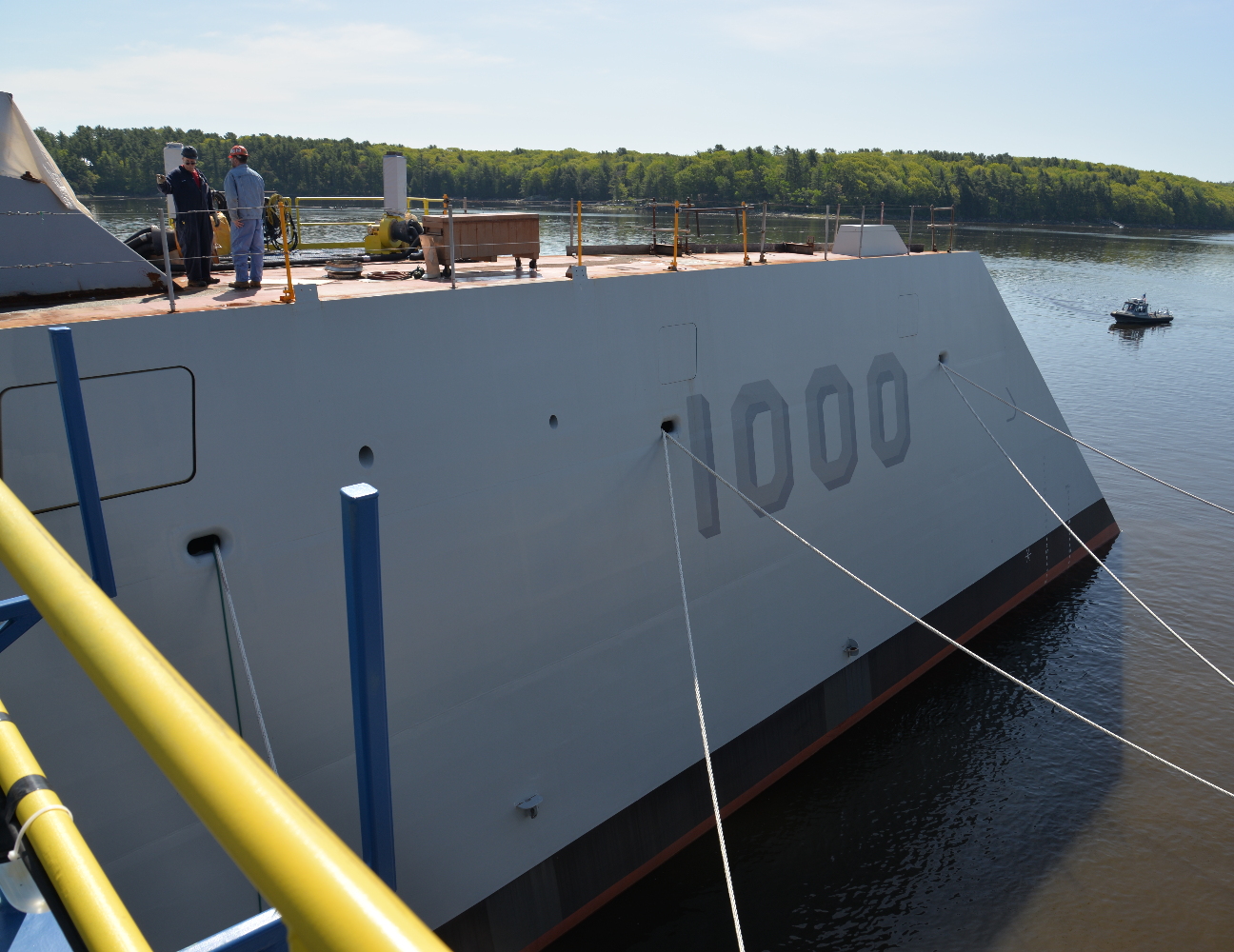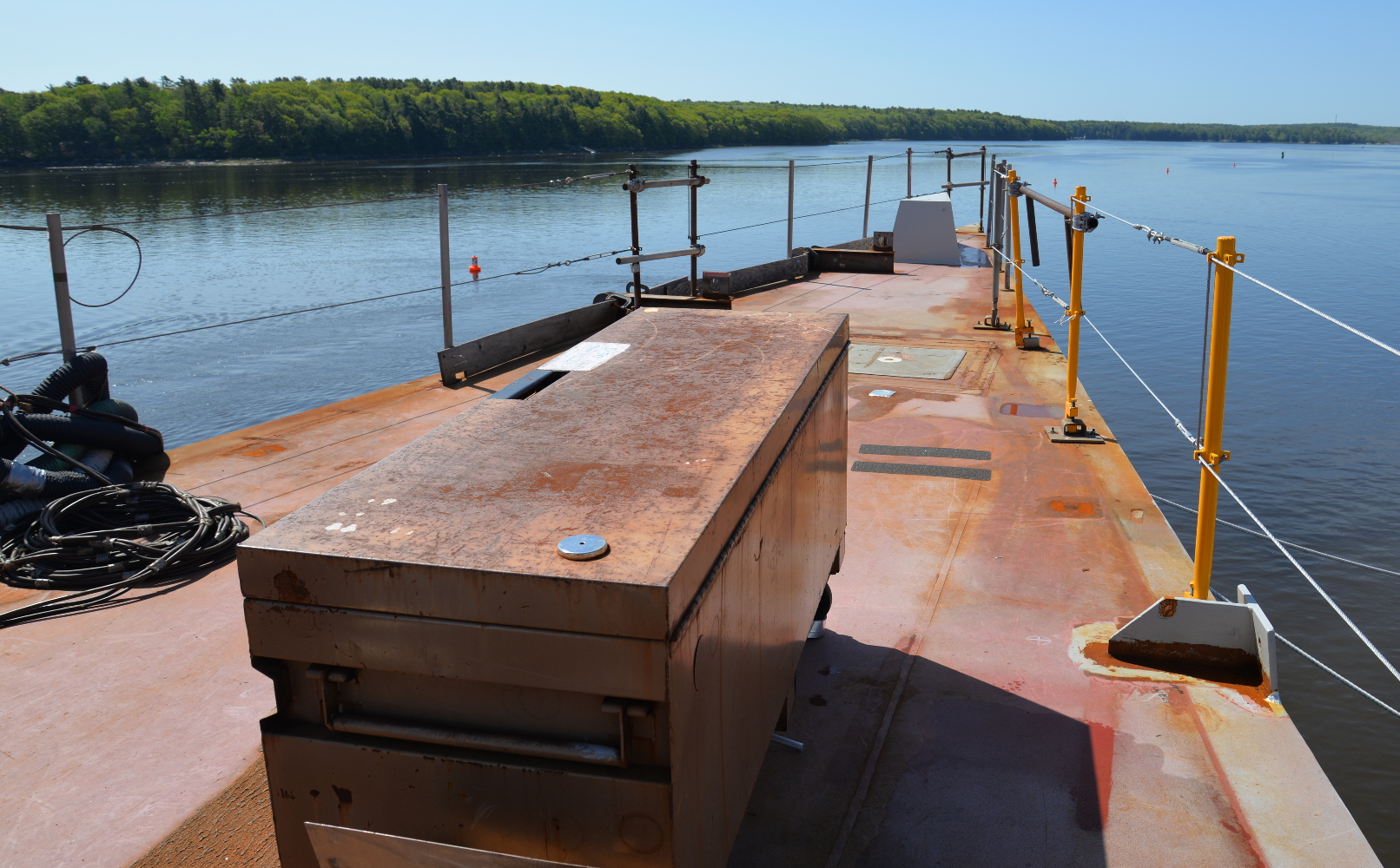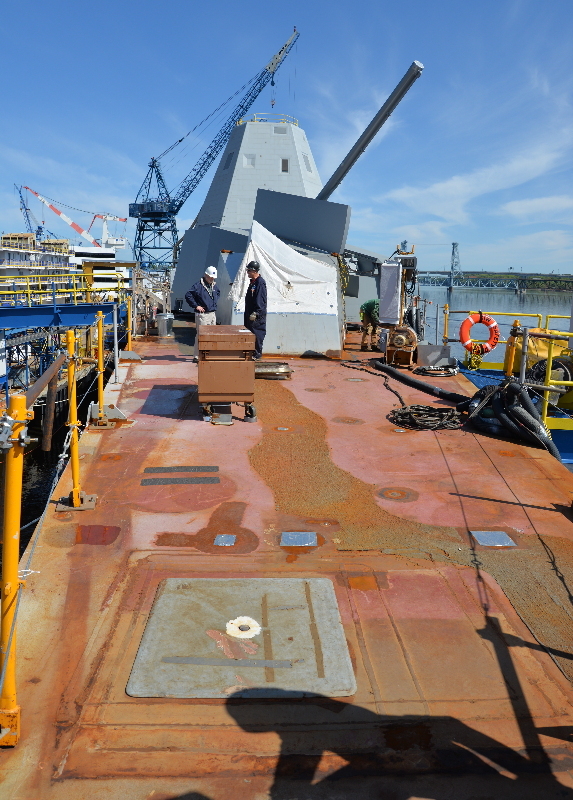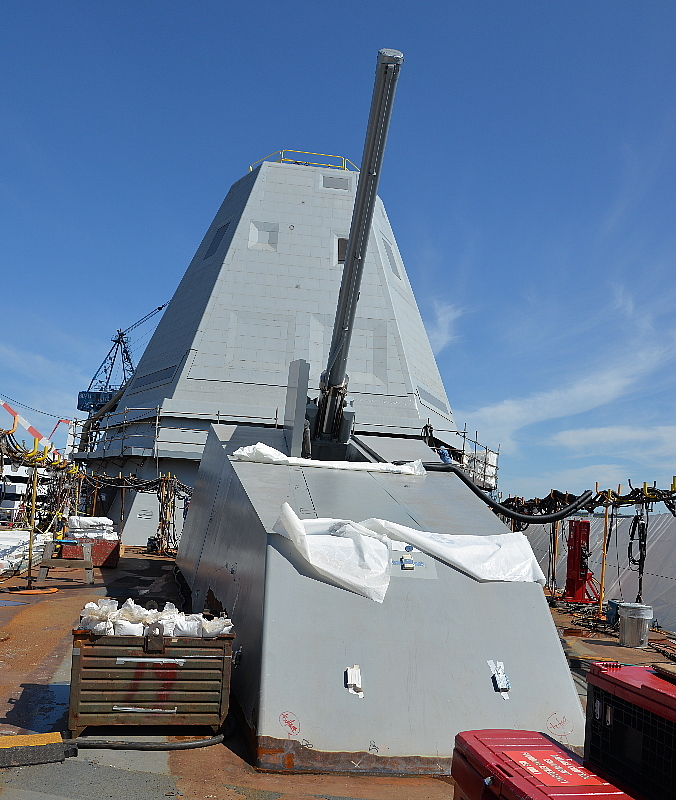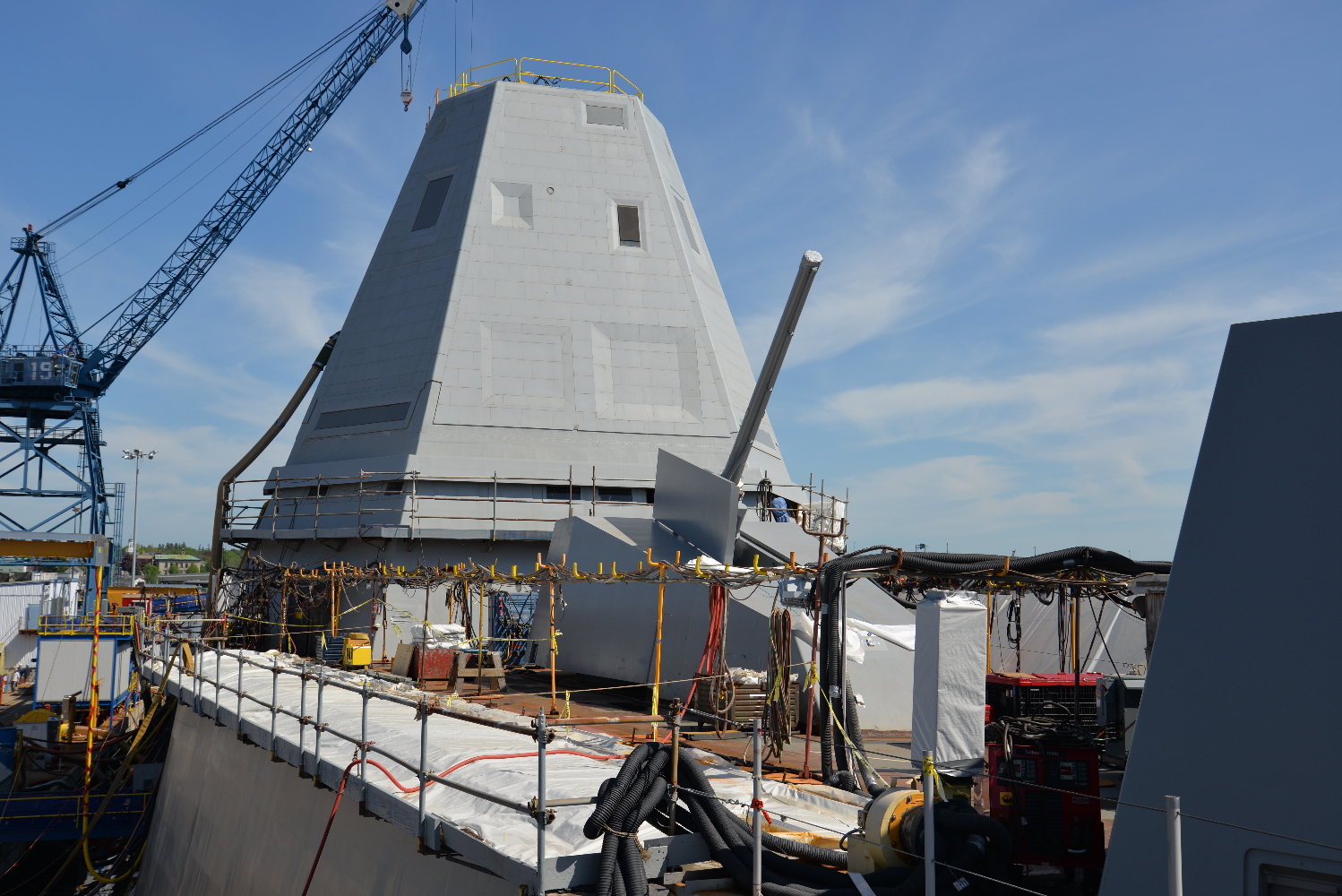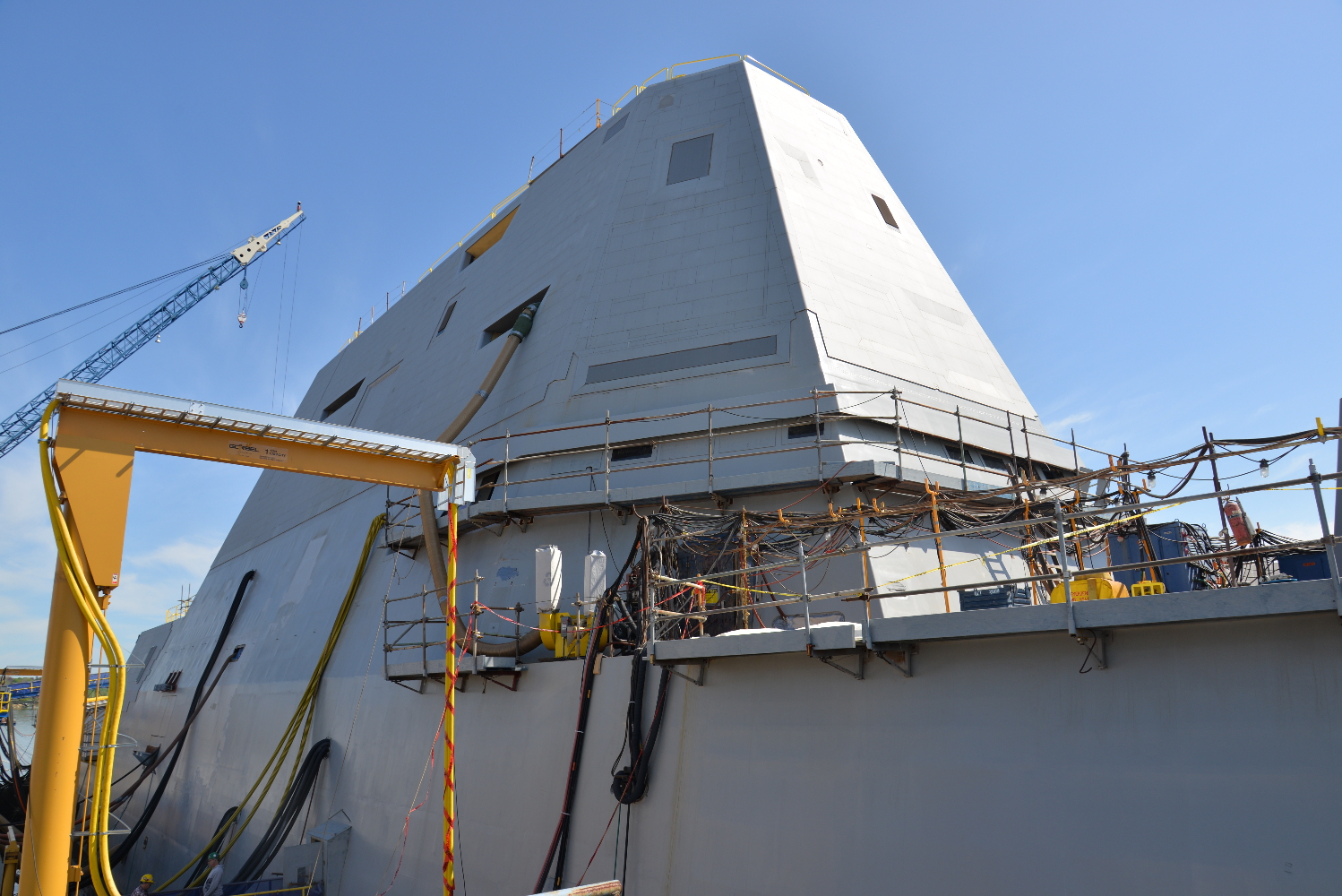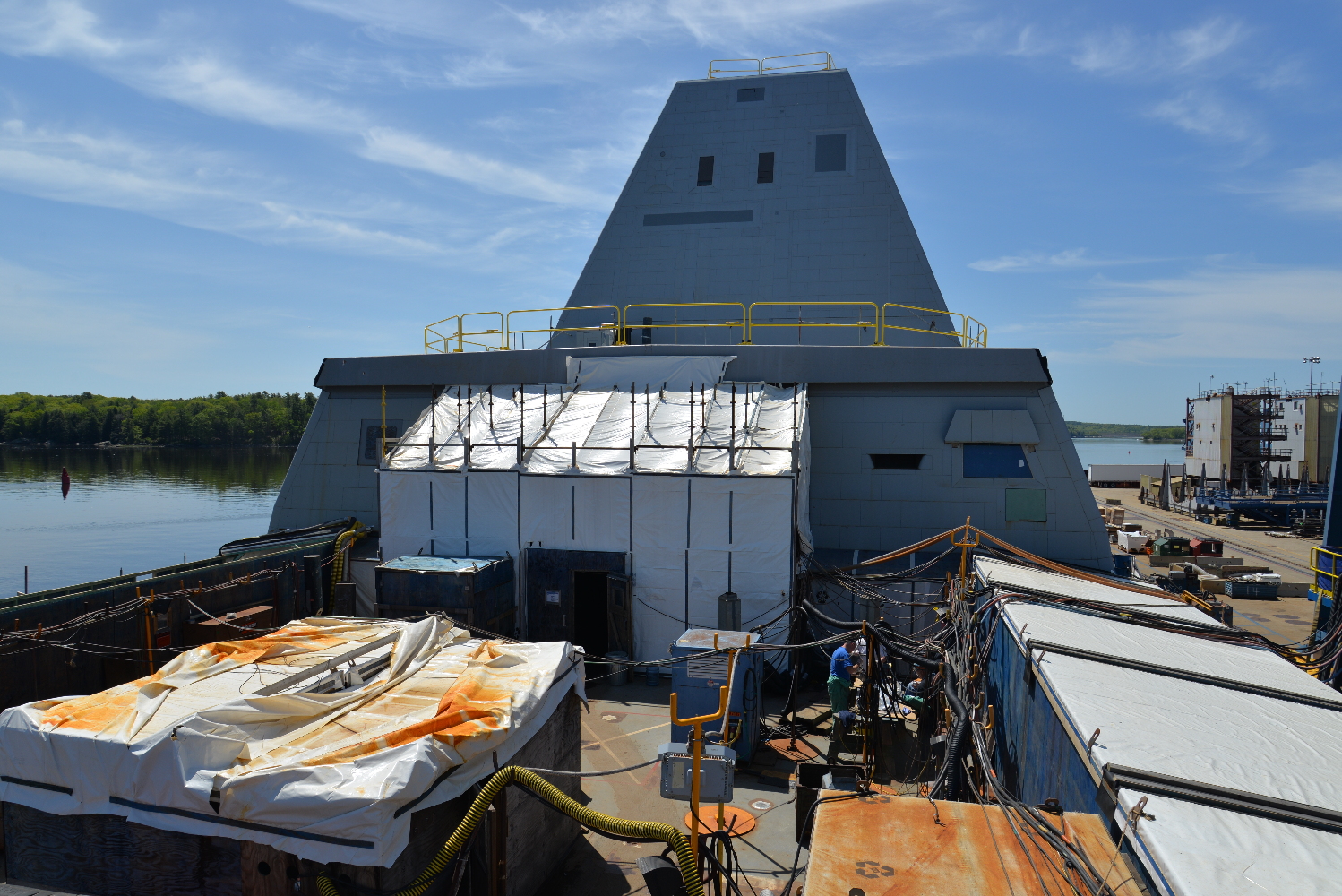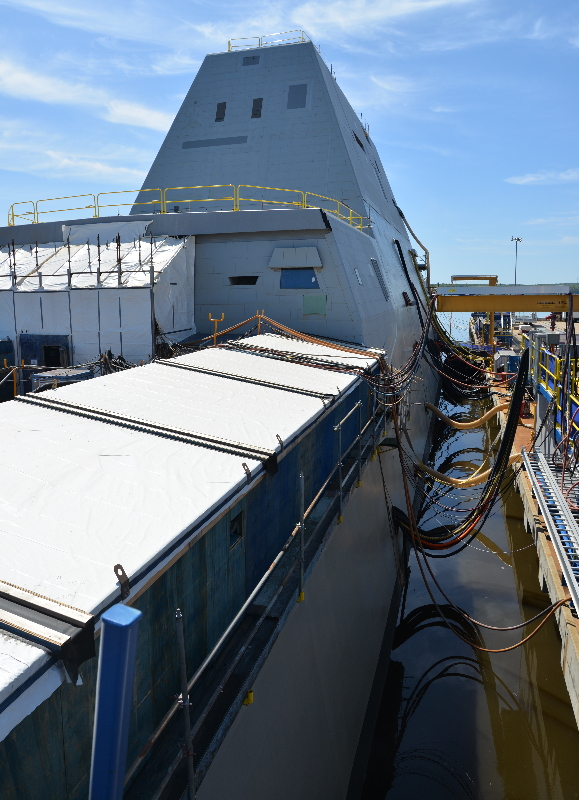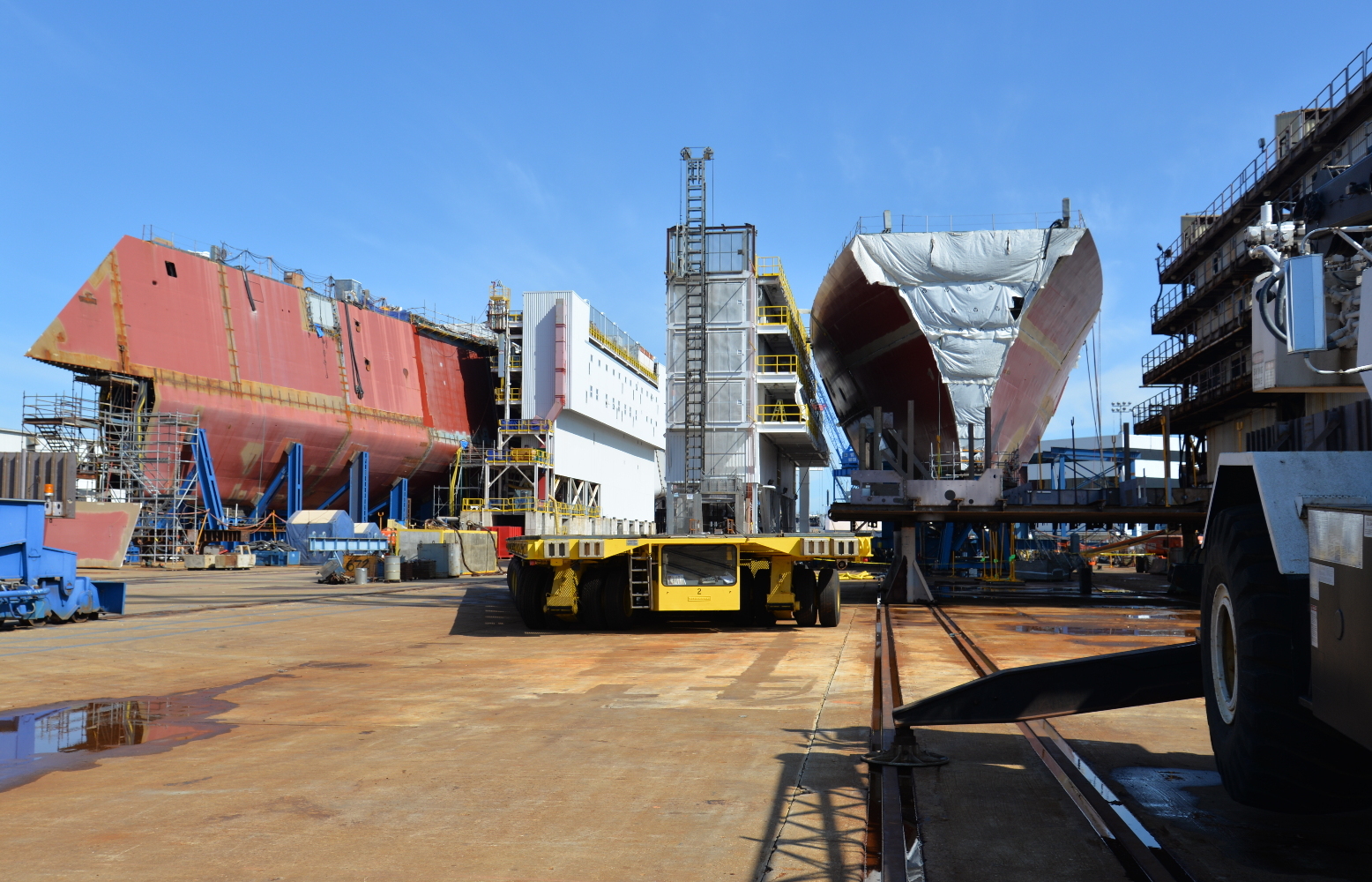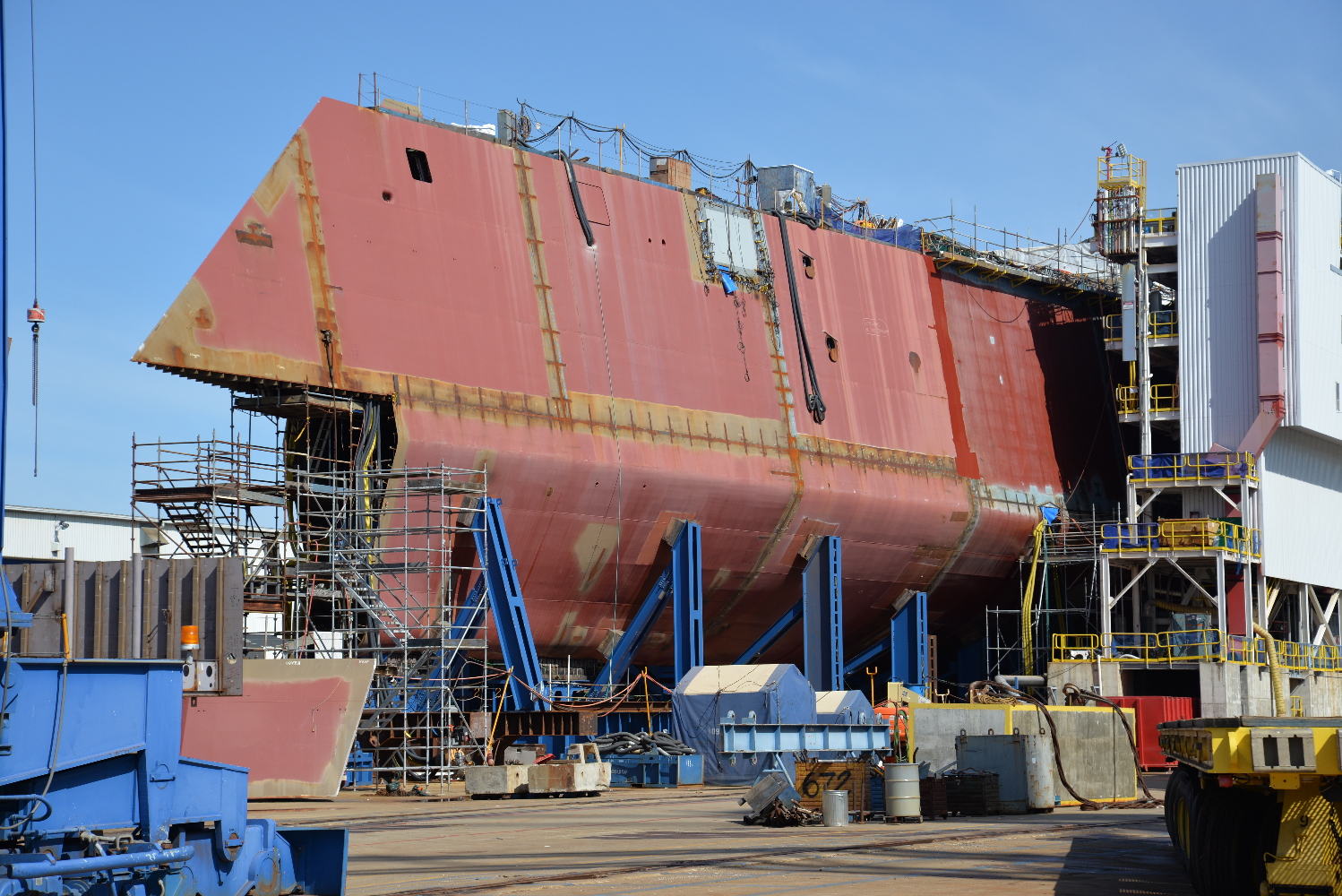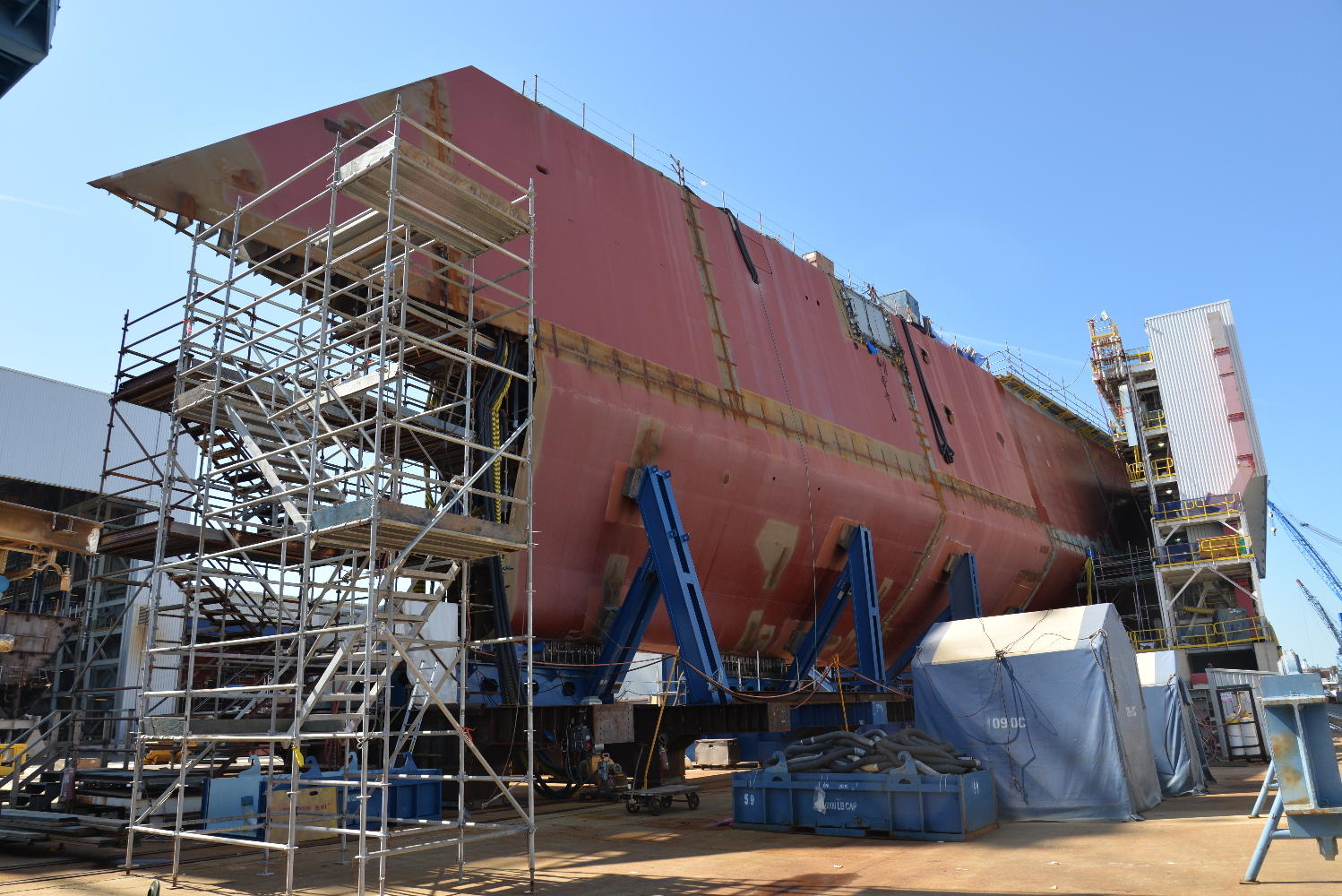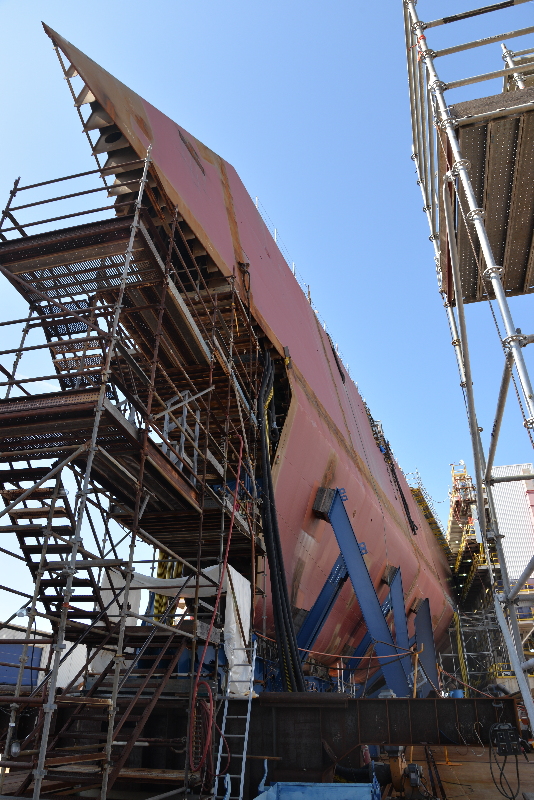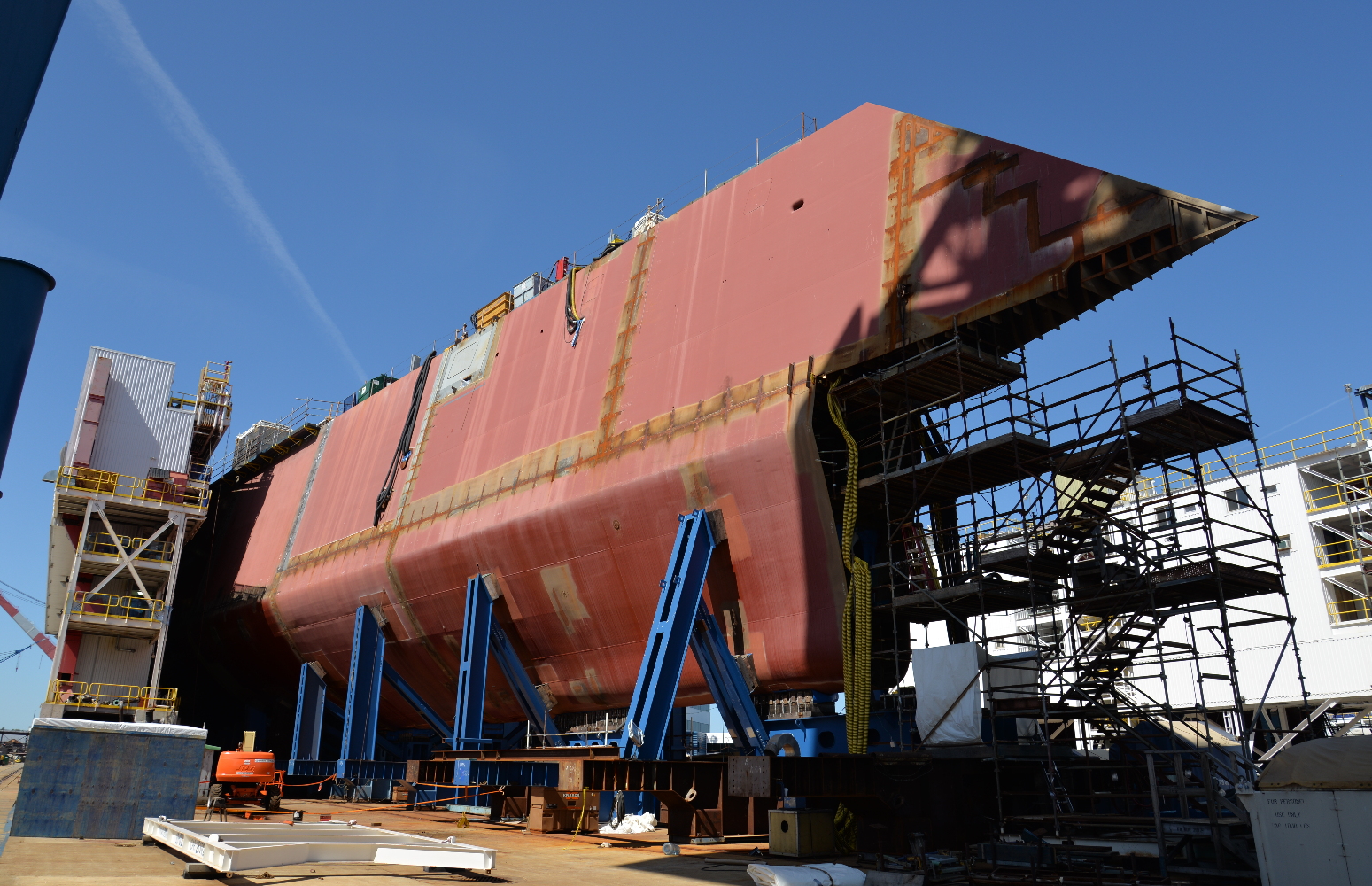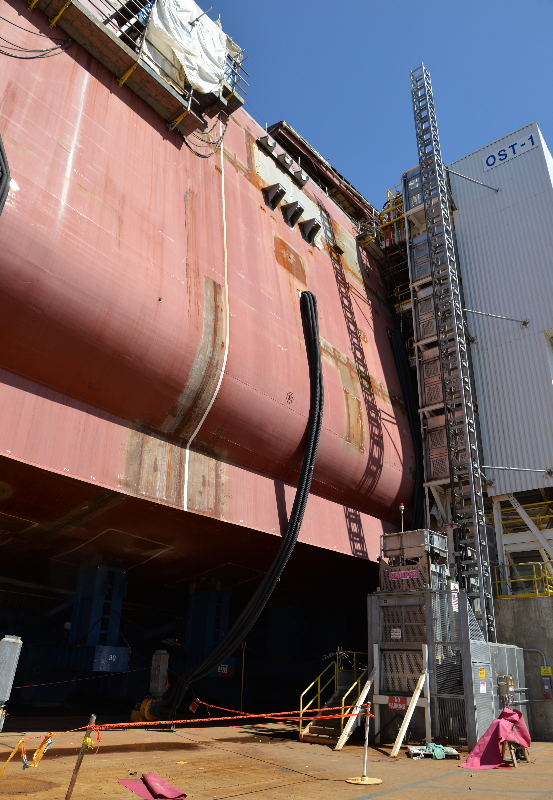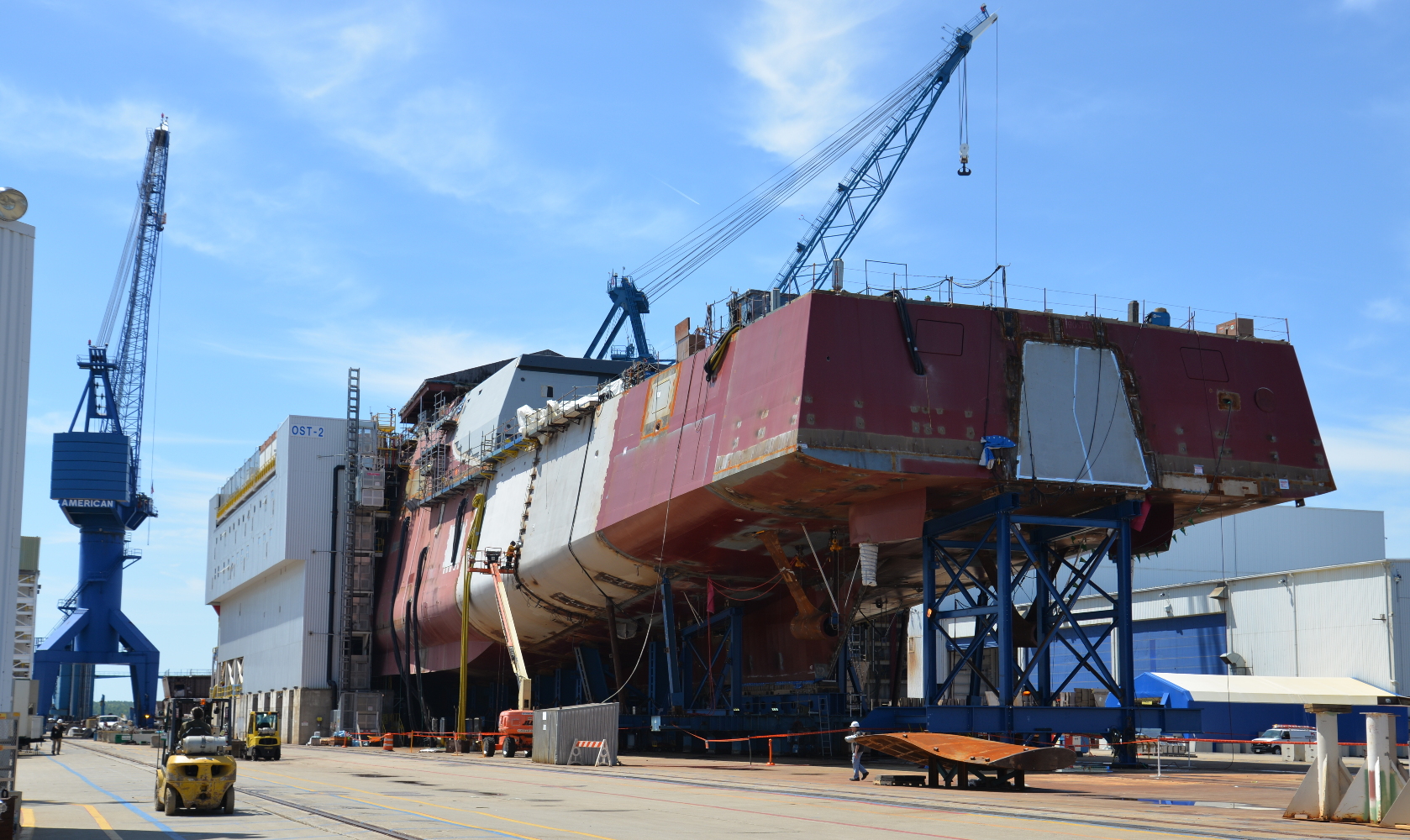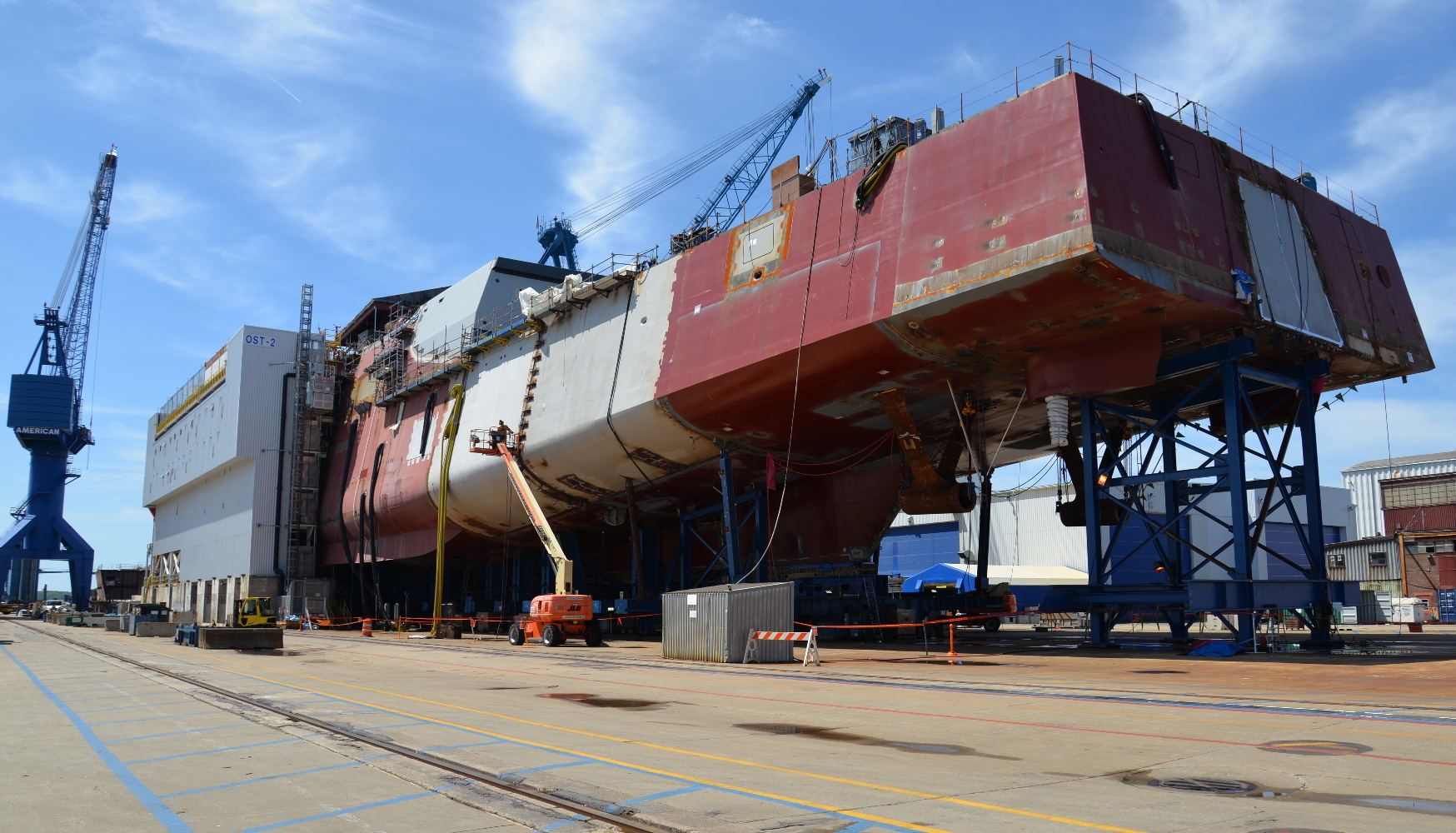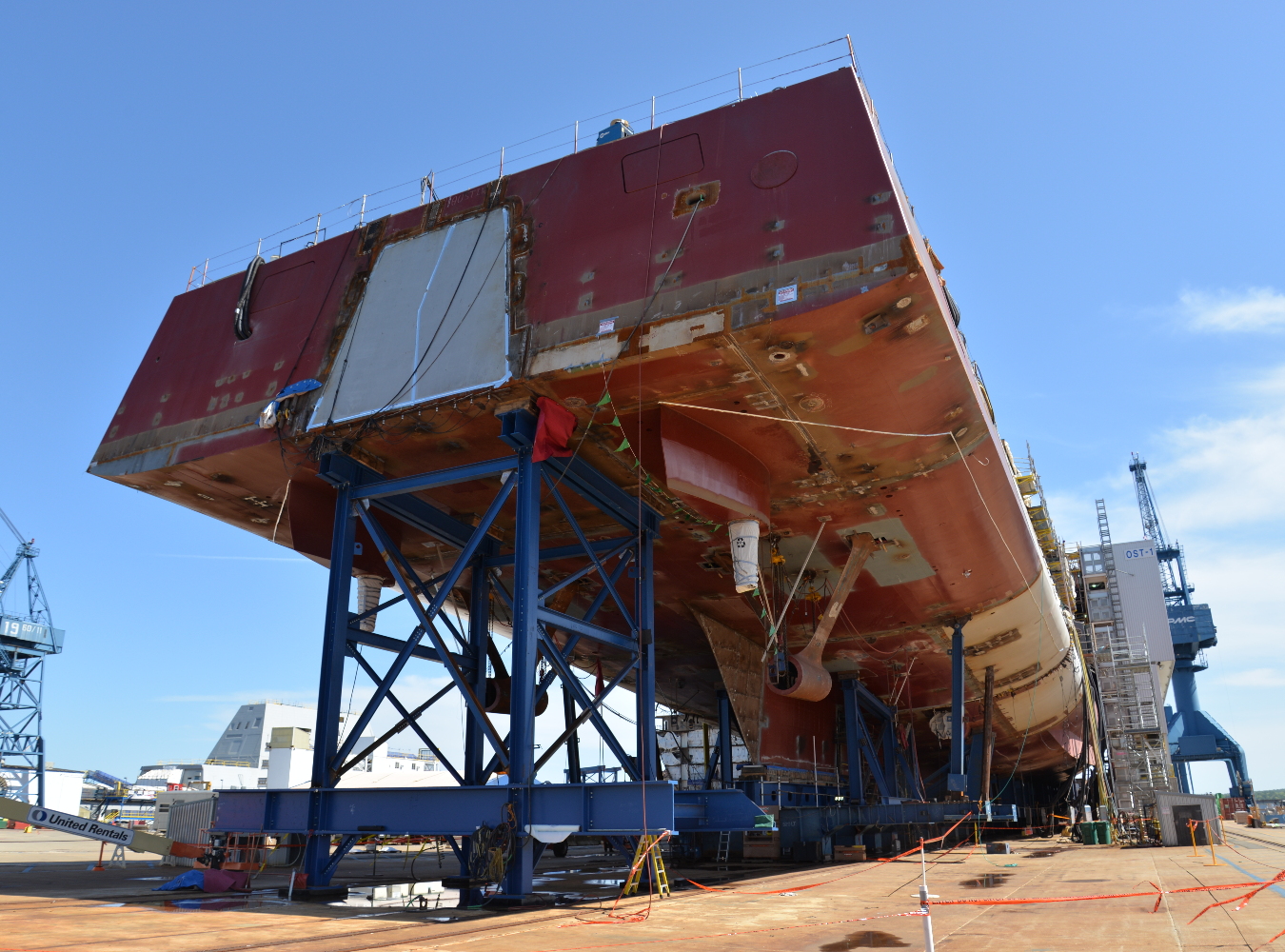ZUMWALT (DDG 1000): The Future Is Getting Closer (Pictorial)
In the small town of Bath, Maine, tucked up along the picturesque Kennebec River, one of the most striking warships ever conceived is under construction. The design of the future USS Zumwalt (DDG 1000) takes stealth to the extreme, and it’s no exaggeration to say no one has ever seen a ship like this.
Six hundred feet long on the waterline, the Zumwalt will displace nearly 16,000 tons full load when she puts to sea towards the end of 2015. All external protuberances have been recessed or subsumed into the hull or superstructure in order to minimize radar cross sections and signatures, resulting in a ship that is as streamlined as possible.
Launched last October at General Dynamics Bath Iron Works, the Zumwalt was formally christened on April 12. She’s expected to begin sea trials in late 2015.
Three ships of the class are under construction. The second, Michael Monsoor (DDG 1001), is coming together on the shipyard’s Land-Level Transfer Facility, while construction has begun on the Lyndon B. Johnson (DDG 1002).
We visited the ship on May 29, 2014, a beautiful, calm day after a long streak of dull, dark, drizzly weather. Thanks to the folks at Bath Iron Works and the US Navy’s Naval Sea Systems Command, we came back with some of the best photos yet of the new ship. Interior photography was not permitted, so, sorry, folks, no shots of the ship workers, scaffolding and construction-zone ephemera that is inside. But the exterior of the ship is getting pretty close to what she’ll look like when she goes to sea.
Published by Christopher Cavas for Intercepts
